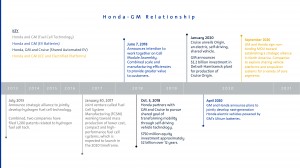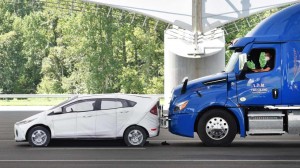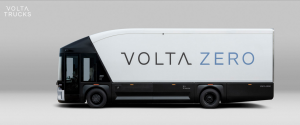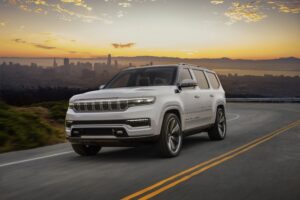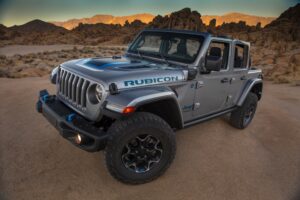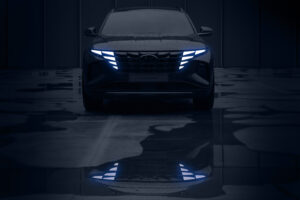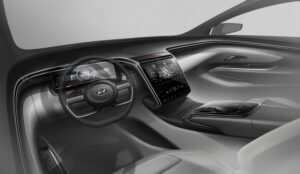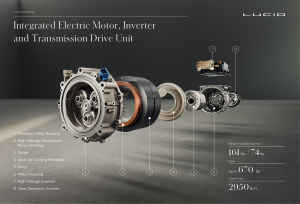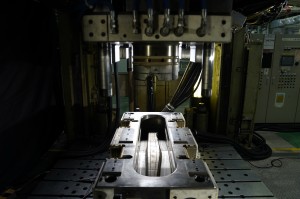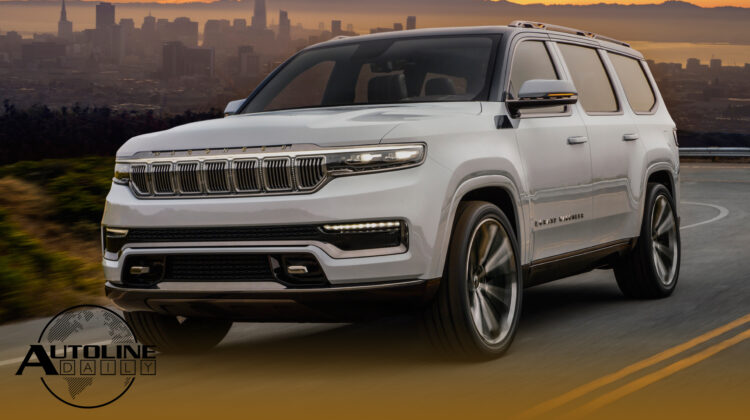
Listen to “AD #2910 – GM and Honda Partner in N.A.; All-New Jeep Wagoneer Revealed; Nissan Making Carbon Fiber Parts Faster” on Spreaker.
Follow us on social media:
Runtime: 10:57
0:07 GM & Honda Team Up in North America
0:52 IIHS Calls for Safety Tech in Semis
1:53 Another Startup Enters EV Truck Segment
2:36 Daimler Shies Away From Making Battery Cells
3:58 All-New Jeep Wagoneer Revealed
4:49 Wrangler PHEV Gets 25 EV Miles
5:19 Customer Designed Jeep Easter Egg a “Surprise”
6:46 All-New Hyundai Tucson Teased
7:30 Lucid Air Does 1/4-Mile in 9.9 Seconds
8:54 QuantumScape Going Public Through Reverse Merger
9:26 Nissan Making Carbon Fiber Parts Faster
Visit our sponsors to thank them for their support of Autoline Daily: Bridgestone and Intrepid Control Systems.
This is Autoline Daily, the show dedicated to enthusiasts of the global automotive industry.
GM & HONDA TEAMING UP IN NORTH AMERICA
And we sure are seeing this industry turn into a mish-mash of global alliances. Ford and VW are working together. PSA and FCA want to merge. Renault, Nissan and Mitsubishi have joined forces. Toyota owns chunks of Mazda and Subaru. Geely owns Volvo. And now General Motors and Honda are going to work together in North America. They already started plans to share platforms for EV and ICE vehicles and engineering work on them starts next year. Honda is going to use GM’s EV architecture and Ultium batteries and will have OnStar in those vehicles. So why is there so much M&A activity? Because it’s all about cutting costs and freeing up capital.
IIHS CALLS FOR SAFETY TECH ON SEMI TRUCKS
Automatic emergency braking helps to significantly reduce crashes and injuries for passenger vehicles and a new study from the IIHS found that equipping semi-trucks with AEB as well as Forward Collision Warning also greatly reduces accidents. It says trucks with forward collision warning were involved in 22% fewer crashes and trucks with AEB had 12% fewer crashes compared to ones without the systems. And in rear end collisions, forward collision warning and AEB reduced crashes by 44% and 41%, respectively. Fatalities involving large trucks have been rising over the last decade. In 2018, over 4,100 people were killed in crashes involving large trucks, which is nearly a third more than in 2009. Because of this, the IIHS is calling for the safety systems to become standard equipment on large trucks.
ANOTHER STARTUP GETTING INTO EV TRUCK SEGMENT
And in other commercial truck news, Swedish startup Volta, unveiled a 16-ton electric truck called the Zero. It will begin testing the truck, which has up to 200 kilometers or 125 miles of range from a 200 kWh battery pack, for package deliveries in Europe next year. And it plans to start producing the truck in the UK in 2022, aiming to have 500 trucks on the road the same year. The company says it’s in discussion with suppliers to contract manufacture its trucks. The electric big truck segment is starting to get a bit crowded, Volta will have to compete with Volvo, Daimler, Tesla and Nikola.
DAIMLER SHYS AWAY FROM MAKING BATTERY CELLS
Ford was recently criticized for saying it saw no value in making its own battery cells for electric vehicles. And now Daimler is saying the same thing. Speaking to reporters yesterday, Ola Kallenius, the CEO of Daimler, said making batteries consumes huge amounts of capital that they’d rather invest elsewhere. He pointed out that they have teamed up with CATL and Faresis to make cells in China, and with a company called Sila Nano in the U.S. to develop new anodes. Kalenius said that while Daimler saw no need to manufacture batteries, Mercedes-Benz engineers are heavily involved in designing them.
A quick reminder here. There will not be an Autoline After Hours show today, but join us next week when we get back our regularly scheduled programming.
ALL-NEW JEEP WAGONEER REVEALED
Jeep unveiled the concept version of the Wagoneer and Grand Wagoneer this morning. And these models definitely move the brand more upscale. It starts with a bit of drama as the lighting wakes up in a sequence that starts with the lettering on the leading edge of the hood. And the designers came up with a way of making the 7-slot grille look a lot more sophisticated. The interior is richly appointed, with real teak wood accents. And you want screens? There’s a total of 45 inches of screens in the front and 30 inches in the rear. Hard core audiophiles will be pleased to hear that the sound system comes from McIntosh. Jeep didn’t release a lot of technical details. We know there will be an independent front and rear air suspension. And there will be a PHEV version.
JEEP WRANGLER PLUG-IN GET 25 EV MILES
But Jeep did release details of the PHEV Wrangler and maybe that hints at what will go in the Wagoneer. The Wrangler gets a 2-liter gasoline engine with 2 electric motors. That delivers 375 horsepower. The 17 kilowatt hour pack provides 25 miles of EV range and the vehicle gets a 50 MPGe rating. The Wagoneer does not go on sale until next year and no doubt Jeep will dribble out more details until it does.
CONSUMER-DESIGNED JEEP EASTER EGG TO BE A “SURPRISE”
And speaking of Jeep, back in June we ran a story about how the company was looking for help from the public to design a new hidden feature on its vehicles, what Jeep calls Easter Eggs. And truth be told, we forgot all about it. But Autoline viewer Jon did not. He wrote in to say, “The Jeep Easter Egg contest winner was supposed to be announced a month ago, by July 31, 2020. Maybe you could ask your FCA contact why this is taking so long. Have they forgotten about it?” So, we did ask someone at FCA and here’s what the Head of Marketing Communication had to say, “Short answer: The winner/design has been selected, but not announced publicly yet. (*A non-disclosure agreement is in place with the winner until such time as the brand announces vehicle/Easter Egg within it.) Because the whole point of Easter Eggs is about discovery, the Jeep brand has elected to keep the design a “surprise/delight” as part of a future new Jeep brand vehicle. Which Jeep vehicle it will be is not yet being revealed, but I think it’s safe to say that when the new vehicle is announced, we will point out that the consumer-winning design can be found within it.” Well, there’s your answer Jon and thanks for catching that and taking the time to write in. But if you were waiting for a phone call that you had the winning design, that ship has already sailed.
ALL-NEW HYUNDAI TUCSON TEASED
Here’s our first look at the new Hyundai Tucson. The lighting really stands out on this vehicle, but only after it’s turned on. Those lights at the front actually look like they’re part of the grille until the vehicle is started. The lighting at the rear is quite dynamic as well. The interior looks clean, but note how the infotainment screen appears to be bridged over the face of the dash. A very interesting concept. The all-new Tucson will be revealed online on September 15th.
LUCID AIR CAN DO 1/4-MILE IN 9.9 SECONDS
Lucid Motors revealed more about its Air sedan. This time releasing a video showing the 1,080 horsepower version of its car smoking a Tesla and Porsche on the drag strip. Lucid claims it was able to do runs as low as 9.9 seconds on a consistent basis. To help the Air achieve those blistering times, it’s equipped with two electric motors that are also integrated with a transmission and differential into one unit. Each produces over 650 horsepower and can spin to 20,000 RPM, yet are small enough to fit into a carry-on bag and weigh 163 lbs or 74 kg. As we said before, the Air will have the option for a 113 kWh battery pack, but what you might not know is that Lucid’s battery is race proven. Atieva, the technology division of Lucid, has been supplying battery packs to the Formula E racing series for two years. In fact, Lucid Motors was originally founded as Atieva in 2007 and had planned on being a supplier of electronic components to other manufacturers. Somewhere along the way it must have felt it could make a better EV itself, changed its name to Lucid Motors in 2016 and announced it would make its own car.
QUANTUMSCAPE GOING PUBLIC THROUGH REVERSE MERGER
In other EV news, another startup is going public through a reverse merger, this time a battery company named QuantumScape. Spun out from Stanford University in 2010 and based in California, QuantumScape said it will form a joint venture with Volkswagen, which has invested $300 million into the company, to produce solid-state battery cells starting in 2024. QuantumScape is expected to launch with a value of $3.3 billion.
NISSAN MAKING CARBON FIBER PARTS A LOT FASTER
Nissan says it’s come up with a way to make carbon fiber parts for cars a lot faster. It uses C-RTM or compression, resin transfer mold. RTM is commonly used in the industry, but Nissan found a way to do it faster. The process begins with designing dies using computer aided engineering. The key is to incorporate grooves in the die that direct the flow of the resin evenly throughout the mold. And to make sure the resin flows faster, they hold the heated die open slightly before completing the compression process. Slowing it down slightly actually sped up the overall process. They’ve chopped the cycle time down from 10 minutes to only 2 minutes. Nissan wants to use carbon fiber pieces for structural items like B-pillars, and not just for trim pieces. Here’s our Autoline Insight. This is a significant improvement, but we wonder if a 2-minute cycle time is fast enough for mass production? Remember, a stamping press can kick out a dozen B-pillars every minute. But maybe the weight savings and parts consolidation can offset all that.
But that wraps up today’s show. Thanks for watching.
Thanks to our partner for embedding Autoline Daily on its website: WardsAuto.com

John McElroy is an influential thought leader in the automotive industry. He is a journalist, lecturer, commentator and entrepreneur. He created “Autoline Daily,” the first industry webcast of industry news and analysis.




